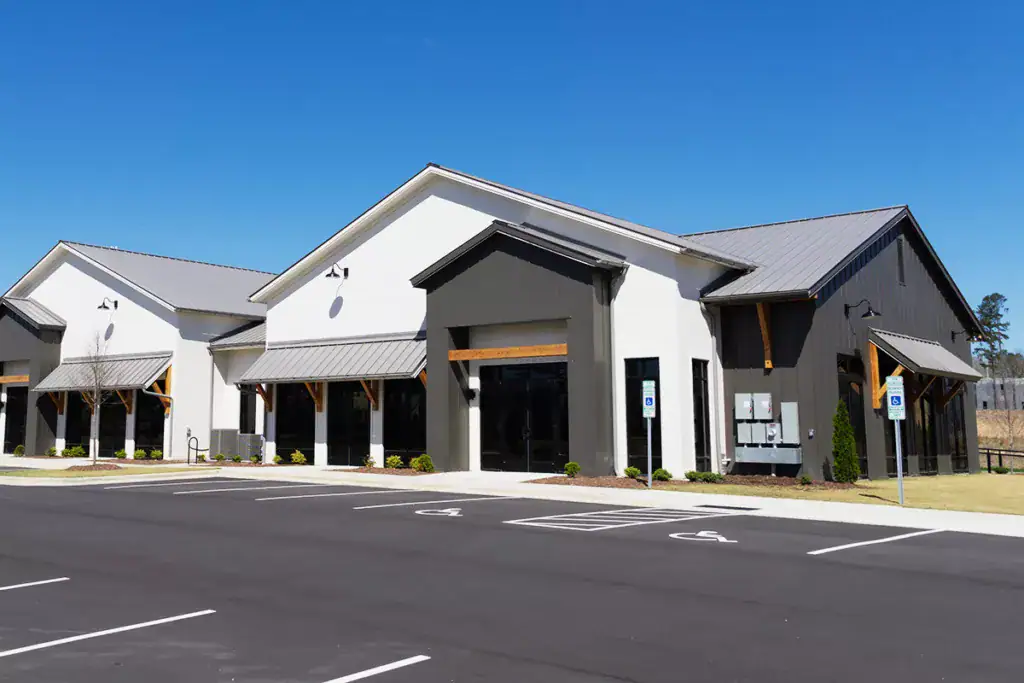
12 Aug Protecting Your Investment with Commercial Exterior Painting in Vienna
Captivating First Impressions: The Value of Curb Appeal
How curb appeal steers tenant and customer behavior
Fresh exterior paint is one of the fastest ways to change how people perceive your property. Walk-by and drive-by decisions happen in seconds, and commercial façades that show fading, chalking, or peeling are often judged as neglected—customers may choose a competitor. Prospective tenants can either discount the rent or pass on the offer entirely. In your market, properties that present a polished exterior commonly lease faster; as a practical benchmark, you should expect marketing and leasing activity to improve within 30–90 days after a visible refresh when the rest of the property systems are in order.
Color strategy: branding, legibility, and longevity
Choose colors that reinforce your brand and increase legibility from the curb. High-contrast color schemes—dark body with lighter trim or vice versa—improve sign visibility and pedestrian wayfinding. For example, a retail center in Vienna that switched to a neutral body tone with a bold brand accent on entryways saw improved sign clarity and reported higher foot traffic during peak hours. Specify UV-resistant pigments and mildewcide-containing topcoats for sun-exposed façades; these additives slow fading and biological staining, extending aesthetic life by several years compared with standard house paints.
Material-appropriate systems: match coatings to substrate
Every substrate demands a specific paint system. For vinyl or fiber-cement siding, use 100% acrylic latex with a satin or low-sheen finish to allow vapor permeability and reduce dirt pickup. Masonry and stucco perform best with elastomeric or breathable masonry coatings that bridge hairline cracks. These systems often require a primer plus two coats, and can tolerate substrate movement better than standard latex. Steel and aluminum storefronts benefit from epoxy primers and polyurethane topcoats that offer corrosion resistance and a durable, scrub-resistant finish. Expect commercial-grade systems to follow a minimum two-coat application after proper priming and surface prep.
Prepare like a pro: the difference is in the details.
Surface preparation accounts for as much as 70% of a project’s long-term success. You should budget time for pressure washing to remove chalk, mildew, and dirt; mechanical or chemical removal of loose coatings; and substrate repairs such as patching stucco or sealing joints. On projects where coatings fail early, inspection typically reveals inadequate preparation or missed hidden corrosion on metal substrates. Insist on documented prep procedures—your contractor should provide a scope that lists cleaning PSI, primer types, and estimated dry film thickness.
Maintenance planning and measurable ROI
Think of paint as a preventative maintenance measure, not just an aesthetic upgrade. A scheduled exterior repaint and touch-up program every 7–12 years for most siding types helps prevent water intrusion and substrate degradation, which can lead to costly repairs far exceeding repainting budgets. Typical commercial exterior painting costs vary widely by building size and condition, but planning on a lifecycle of at least 7–15 years for quality systems gives you a basis to model long-term value. Track metrics such as vacancy rate, tenant inquiries, and maintenance call frequency before and after the project to quantify return on your investment.
Local climate considerations for Vienna properties. Vienna’s humid summers and winter freeze-thaw cycles accelerate chalking and biological growth on shaded façades. Specify coatings with built-in mildewcides and UV stabilizers for south- and west-facing elevations. For masonry walls, a breathable coating reduces the risk of trapped moisture during winter freeze-thaw, while metal components should receive corrosion-inhibitive primers to mitigate rust. Adjust your painting schedule to avoid the hottest summer days and the coldest winter weeks—optimal exterior painting temperatures typically fall between 50°F and 85°F to ensure proper curing and adhesion.
Minor upgrades that make a significant visual impact
Targeted updates often deliver high visual ROI without a full repaint. Repainting canopies, trim, doors, and entry accents creates a refreshed look at a fraction of the cost. Replacing or coordinating anodized metal finishes and updating signage with complementary colors also enhances curb appeal. Prioritize areas that guests touch or see first—entry doors, parking lot-facing façades, and pedestrian approaches—and you’ll notice disproportionately positive impressions among customers and tenants alike.
Key Takeaways:
- Protects building envelope and extends the life of exterior materials through proper surface prep and high-quality coatings.
- Improves curb appeal, tenant satisfaction, and long-term property value while minimizing costly repairs down the road.
- Professional commercial crews deliver fast, safe, and code-compliant results with warranties and minimal business disruption.
Protecting Your Investment with Commercial Exterior Painting in Vienna. A well-executed commercial exterior paint project is more than an aesthetic update —it’s an investment in your property’s longevity and performance. In Vienna’s climate, buildings face sun, moisture, and seasonal temperature swings that accelerate wear on siding, trim, and metal components. Using commercial-grade primers and topcoats applied after thorough surface preparation helps seal out moisture, prevent rot and corrosion, and slow deterioration so you avoid premature repairs or replacement. Beyond protection, a fresh, consistent exterior finish strengthens curb appeal and communicates professionalism to customers and tenants. Color and finish choices can refresh branding, increase rental or resale value, and support tenant retention. Professional commercial painters also manage logistics — scheduling work to reduce business impact, addressing safety and access concerns, and ensuring compliance with local codes and HOA requirements. Home Works Painting brings commercial painting expertise to Vienna projects, offering tailored maintenance plans, high-performance coatings, and workmanship warranties so your property stays protected and attractive year after year. Learn more or request an estimate at https://homeworkspainting.com/.
Long-Term Durability: The Science of Paint Protection
Weather Resistance and Climate Considerations
Seasonal swings in temperature, repeated freeze–thaw cycles, prolonged humidity, and constant UV exposure all drive exterior paint failure; UV causes chalking and pigment breakdown, while repeated wetting leads to moisture infiltration and blistering. You should plan coatings that resist UV and shed water—professional systems often extend a façade’s service life from about 5–7 years to 10–15 years with proper substrate prep and the right topcoat selection.
Choosing the Right Paint for Longevity
Selecting 100% acrylic latex for most siding and masonry provides elasticity and UV stability, while elastomeric coatings bridge hairline cracks up to 1/8 inch (3 mm) and resist water intrusion. Metal surfaces require a zinc-rich or epoxy primer followed by a polyurethane topcoat; low-VOC formulas (<50 g/L) are available if air-quality compliance matters to you.
Match the coating system to the substrate: for masonry or stucco use a penetrating masonry primer then a breathable acrylic or elastomeric finish to accommodate vapor transmission; for wood choose an exterior-grade primer that seals tannins and a 100% acrylic topcoat for flexibility; for steel perform SSPC-style surface prep, apply a zinc-rich or epoxy rust-inhibiting primer, then a polyurethane finish for UV and chemical resistance. Pressure-wash at 2,000–3,000 psi and remove all chalk, efflorescence, and rust before priming; inadequate prep will void most warranties and drastically shorten longevity. If you want a system built to last in Vienna’s mixed climate, ask for measured film builds and manufacturer-backed warranties so you can quantify expected service life.
Aesthetic Upgrades: Crafting Your Unique Brand Identity
Color Psychology in Commercial Painting
Color drives perception: studies show color can increase brand recognition by up to 80%, so your exterior palette directly impacts how customers perceive your business. Choose blue for trust and professionalism (typical for banks and medical offices), green to signal sustainability, red to create urgency for food and retail, or warm neutrals to convey hospitality; you can combine these strategically to guide customer emotions and behavior in Vienna’s competitive streetscape.
Enhancing Architectural Features with Color
Use contrasting hues and the 60-30-10 rule—60% primary, 30% secondary, 10% accent—to make cornices, columns, and entryways read from the curb; a bright accent on an entry door or canopy can improve wayfinding and foot traffic. Select coatings by substrate: elastomeric for masonry, high-build acrylic latex for siding, and fluoropolymer or high-performance finishes for metal to avoid premature failure.
Begin with a thorough substrate inspection, followed by the application of 3–5 test patches. Observe these at morning, noon, and dusk to account for Vienna’s seasonal light. Then, select an accent color for doors, canopies, or window surrounds to create intentional sightlines. Avoid skipping primer on raw surfaces and choose UV-stable, high-performance coatings to extend service life—typical exterior repaint cycles range from 5–10 years, depending on exposure. Home Works Painting recommends mockups at full scale and a maintenance plan so your visual upgrades deliver sustained brand impact.
Cost-Effectiveness: Balancing Budget and Quality
Calculating the ROI on Exterior Painting
You typically budget $4–$10 per sq ft for a commercial exterior repaint, depending on prep and coatings; with high-performance systems lasting 7–12 years, that works out to roughly $1–$1.50 per sq ft per year. A refreshed façade can boost tenant interest and curb appeal—property managers often see faster lease-up times and higher offers after a professional repaint—so weigh upfront cost against longer service life and improved revenue potential when calculating ROI.
Preventive Maintenance vs. Reactive Repairs
Regular inspections and spot painting generally cost a fraction of major repairs: a seasonal maintenance pass might run a few hundred dollars, while replacing 150–300 sq ft of rotten siding can reach $5,000–$12,000. Investing in quality primers and moisture-resistant coatings will prevent water infiltration and mold growth, saving you thousands in structural repairs and tenant downtime down the road.
Routine maintenance extends the life of your paint system. It halts minor issues from escalating—power-wash and touch-up cycles every 3–5 years, plus a full repaint at the end of the coating’s service life, typically reduce lifetime repair costs by 30–50%. Case studies from mixed-use buildings in the Vienna area show that proactive maintenance programs cut emergency repair calls by more than half and preserve tenant satisfaction. You can schedule an inspection with Home Works Painting to get a tailored lifecycle plan and line-item cost comparisons at https://homeworkspainting.com/.
Selecting the Right Professionals: What to Look For
Experience and Specialization in Commercial Projects
Seek teams that handle commercial exteriors regularly — aim for contractors with at least 5 years of commercial experience and a track record of 50+ projects, including storefronts, multi-tenant façades, warehouses, and HOA complexes. Verify expertise with common substrates (EIFS, masonry, metal, stucco) and coatings such as elastomeric and high-performance acrylics. Hence, your building gets the right system, not a one-size-fits-all finish.
Assessing Portfolio and Client Testimonials
Ask to review 10–20 high-resolution before/after photos of completed commercial jobs and request contact info for at least three recent commercial references from the last 24 months. Look for repeated praise about surface prep, schedule adherence, punch-list completion, and warranty response; an average review score of 4.5+ stars signals consistent performance.
Evaluate portfolios for projects similar in size and scope to your property — note square footage, substrate type, and whether the contractor documented prep (pressure washing at ~3,000 psi, repairs, priming) and specific coatings used with manufacturer warranties of 10–15 years. When you call references, ask: Did crews meet daily start times? How were unforeseen repairs handled? And was the punch list closed within 14 days? Cross-check testimonials on third‑party sites, confirm proper insurance and trade licenses, and watch for red flags like sparse photos or vague project descriptions — incomplete surface prep is the single most significant cause of premature paint failure.
Compliance and Regulations: Navigating Local Standards
Understanding Vienna’s Building Codes and Regulations
Local enforcement follows the Virginia Uniform Statewide Building Code and Town of Vienna ordinances, plus Fairfax County requirements for public-right-of-way work. Expect Architectural Review Board (ARB) approval for façades in the Historic District, permits for scaffold or sidewalk closures, and adherence to OSHA fall-protection rules for work above 6 feet. Noncompliance can trigger stop-work orders and fines, so you should confirm permit needs and ARB standards before scheduling mobilization.
Environmental Considerations in Commercial Painting
Choose paints with low VOCs (many commercial acrylics are 50 g/L or lower) to meet regional air-quality guidance and reduce odor. Buildings built before 1978 may contain lead-based paint, requiring EPA RRP-certified crews, containment, and waste handling. Prevent stormwater contamination by using containment for pressure washing and directing washout to approved holding/filtration systems; oil-based products and used solvents are handled as hazardous waste at Fairfax County collection sites.
For lead-safe projects, you must hire an EPA RRP-certified firm and ensure certified renovators set up full containment, use HEPA-filtered vacuums, and follow documented cleaning verification procedures; visual inspection plus documented cleanup is standard, and some owners elect dust-wipe clearance testing. Selecting low-VOC, water-based acrylics (many rated 0–50 g/L, with true” “zero-VO”” options under 5 g/L) reduces emissions dramatically—switching from a conventional 250 g/L product to a 50 g/L alternative can lower VOC output by roughly 80%. Runoff controls are crucial on multi-building jobs, where filtered washout tanks, silt barriers, and avoiding discharge into storm drains are essential to comply with Virginia DEQ stormwater rules. Keep SDS sheets, VOC certificates, and disposal receipts on file for your records and inspections; Home Works Painting can provide product documentation and coordinate certified lead-safe crews and local permit submissions via homeworkspainting.com.
Timing Your Project: Optimal Scheduling Strategies
Seasonal Considerations for Exterior Painting
Plan exterior work around Vienna’s mild weather: April–June and September–October offer the best balance of temperature and humidity. Aim for daytime temperatures between 50–85°F (10–29°C) and relative humidity under 70%. High heat over 90°F can cause blistering, and sub-40°F temperatures or overnight freezes will prevent proper curing. Allow 24–48 hours of dry weather after coating, and choose latex for faster drying or alkyd for cooler conditions with longer cure times.
How to Plan Around Business Operations
Schedule Painting in phases to keep primary entrances and key services open, using night or weekend shifts when customer traffic is highest. Block work into 1–2 exterior zones per week, provide clear signed detours, and factor in 24–72 hours for complete surface cure before heavy use. Coordinate deliveries, scaffolding placement, and power access with your operations manager so crews of 3–6 can complete each façade in 2–5 days without shutting you down.
Prioritize safety and compliance by securing permits, posting wet-paint warnings, and arranging ADA-compliant routes. Plan crew size and staging to match your footprint—Home Works Painting often completes a 7,500 sq ft retail strip in Vienna over three consecutive weekends using crews of five, finishing prep, priming, and two finish coats in 15 days total while keeping stores open and minimizing lost revenue.
Final Words
Summing up, you protect your property’s value and curb appeal by investing in quality commercial exterior painting in Vienna; proactive maintenance, weatherproof coatings, and experienced contractors extend lifespan and reduce long-term costs. You should prioritize durable materials and regular inspections, and work with trusted professionals. Contact Home Works Painting at https://homeworkspainting.com/ to ensure your investment remains strong and attractive.
Commercial properties in Vienna face a range of environmental stresses — seasonal temperature swings, humidity, precipitation, and UV exposure. A professionally executed exterior paint system does more than update curb appeal: it forms a protective barrier that slows deterioration, prevents moisture intrusion, reduces maintenance costs, and preserves the building’s structural components and asset value. Home Works Painting applies industry best practices and high-performance coatings that are selected for the local climate and the building’s materials, ensuring long-lasting protection and a professional appearance that supports your business identity.
Key elements of an effective commercial exterior painting project include thorough surface assessment, cleaning and preparation (pressure washing, rust removal, patching, and caulking), proper priming, and application of coatings specified for the substrate—masonry, stucco, wood, metal, or EIFS. For commercial work, we often recommend elastomeric or high-solids acrylic coatings for masonry and stucco to bridge hairline cracks and resist water penetration, and corrosion-resistant primers with urethane or polyurethane topcoats for metal. These systems extend the life of exterior surfaces and minimize the need for frequent repairs.
Hiring a contractor experienced with commercial projects in Vienna ensures compliance with local codes, safe traffic and pedestrian management, and coordination with building management and HOAs when needed. Home Works Painting provides written scopes of work, color consultation, project phasing to reduce tenant disruption, and warranties on labor and materials. We schedule work for optimal weather windows to promote proper drying and adhesion, and we can provide maintenance plans to protect your investment for years.
For a consultation or estimate for your Vienna property, visit Home Works Painting at https://homeworkspainting.com/ or contact our commercial team. We’ll assess your building, recommend an appropriate coating system, and provide a clear plan that balances protection, aesthetics, and budget.
FAQ
Q: How does exterior Painting protect my commercial property’s value in Vienna?
A: Exterior Painting offers multiple layers of protection that preserve both appearance and structure. A properly chosen paint system seals porous surfaces, blocks moisture infiltration, and reduces the likelihood of mold, mildew, rot, and corrosion—conditions that can accelerate material failure and lead to expensive repairs. In addition to physical protection, a fresh, well-maintained exterior improves curb appeal and tenant perception, which supports occupancy rates and rental income. For commercial owners, these combined effects help protect long-term asset value and reduce lifecycle costs.
Q: What steps does Home Works Painting take to ensure a durable commercial exterior paint job?
A: We start with a full site inspection to identify substrate types, existing coating conditions, areas of damage, and any safety or access constraints. Preparation is a priority: surfaces are pressure-washed to remove dirt and biological growth, failed paint and rust are removed, cracks and joints are repaired and sealed, and appropriate priming is applied. We specify coatings based on material and exposure—masonry receives breathable, elastomeric, or high-performance acrylics; metal gets rust-inhibitive primers plus durable topcoats; wood and trim receive selective primers and weather-resistant finishes. Work is performed under controlled conditions when humidity and temperature are favorable for curing. We also implement containment, scaffold, or lift safety plans, and traffic control to protect workers and the public.
Q: How long will a commercial exterior paint job last, and what maintenance is recommended to extend its life?
A: Longevity depends on coating selection, surface preparation quality, exposure conditions, and local climate. With proper preparation and high-quality materials, many commercial systems last 7–15 years before major recoating is needed; metal and high-traffic areas sometimes require touch-ups sooner. To maximize lifespan, schedule routine inspections every 1–2 years to check for peeling, cracking, blisters, or soft spots; clean surfaces periodically to remove dirt and biological growth; and address caulking and joint failures promptly. Home Works Painting can provide a tailored maintenance plan with scheduled inspections, touch-up services, and recommendations for recoating intervals based on the specific system installed.

Mike Katounas is the owner of Home Works Painting, a painting business in Northern Virginia. He has over 15 years of experience in residential interior and exterior painting, drywall installation/repair, carpentry, wallpaper removal, power washing, commercial painting, color consultation, and staining/sealing. Their service areas include Chantilly, Fairfax, Herndon, Oakton, Reston. Mike takes pride in his work, and he always follows a strict code of conduct that includes the use of quality paint, a clean workspace, and an honest, respectful approach to his customers.
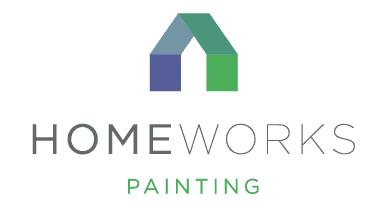



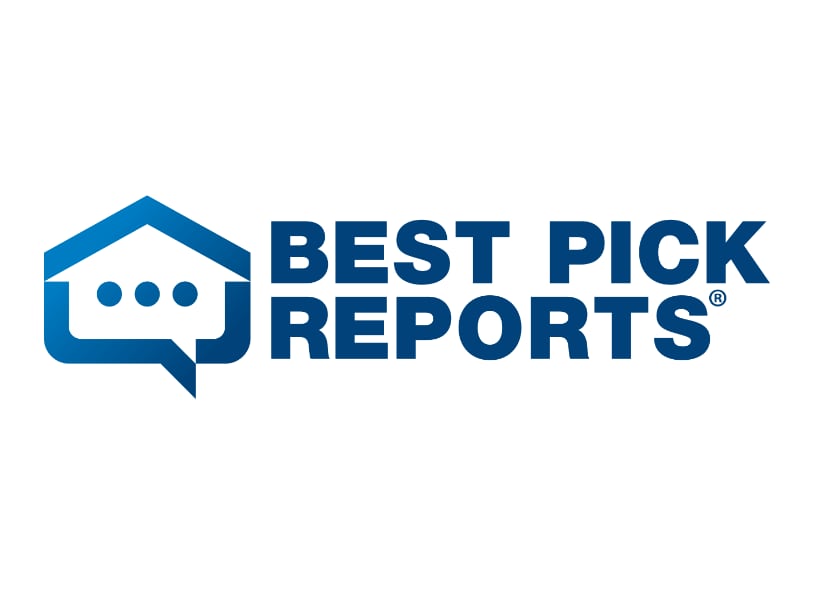
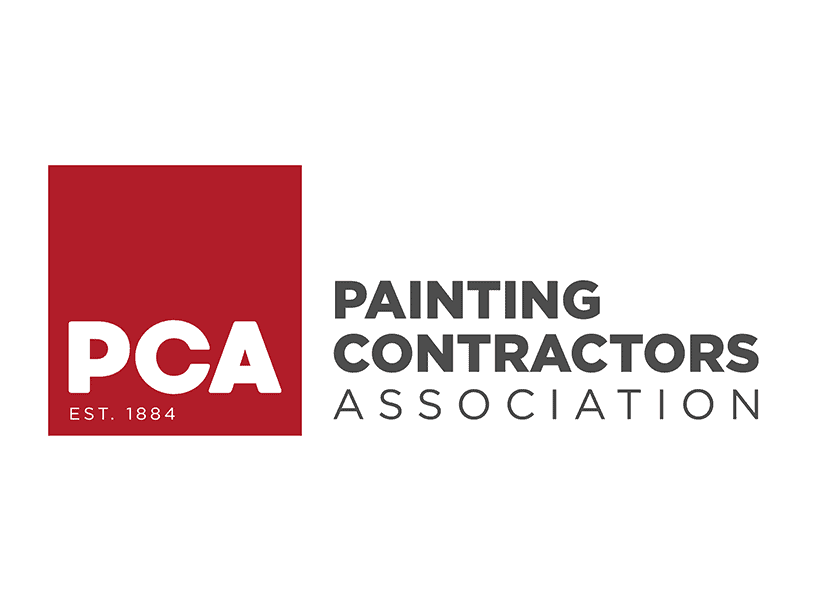



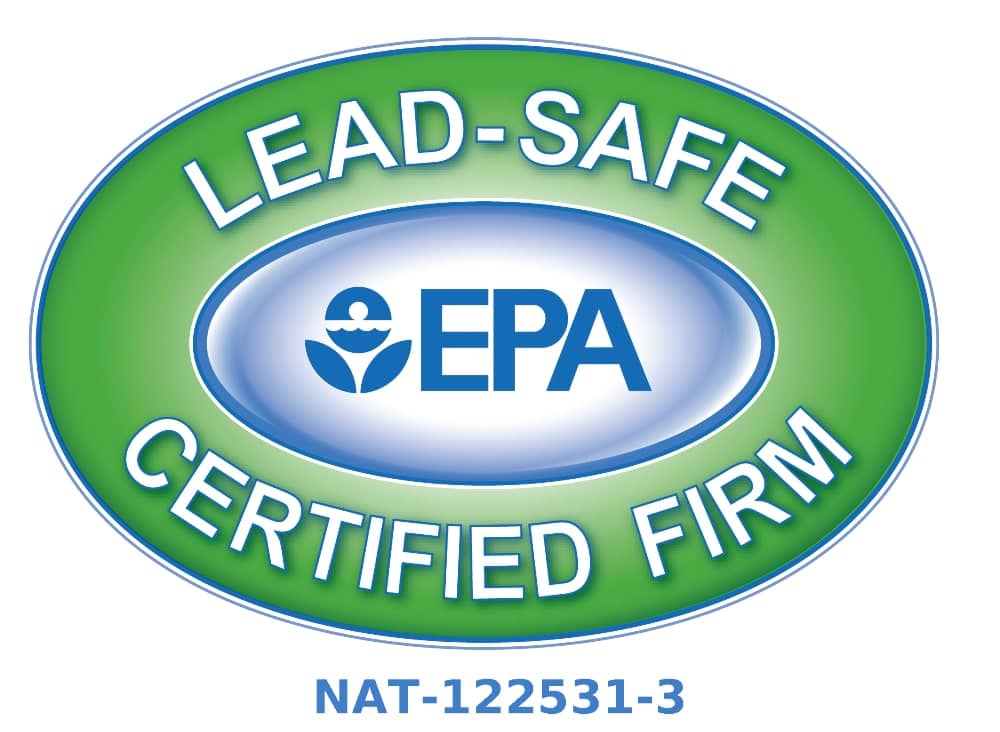
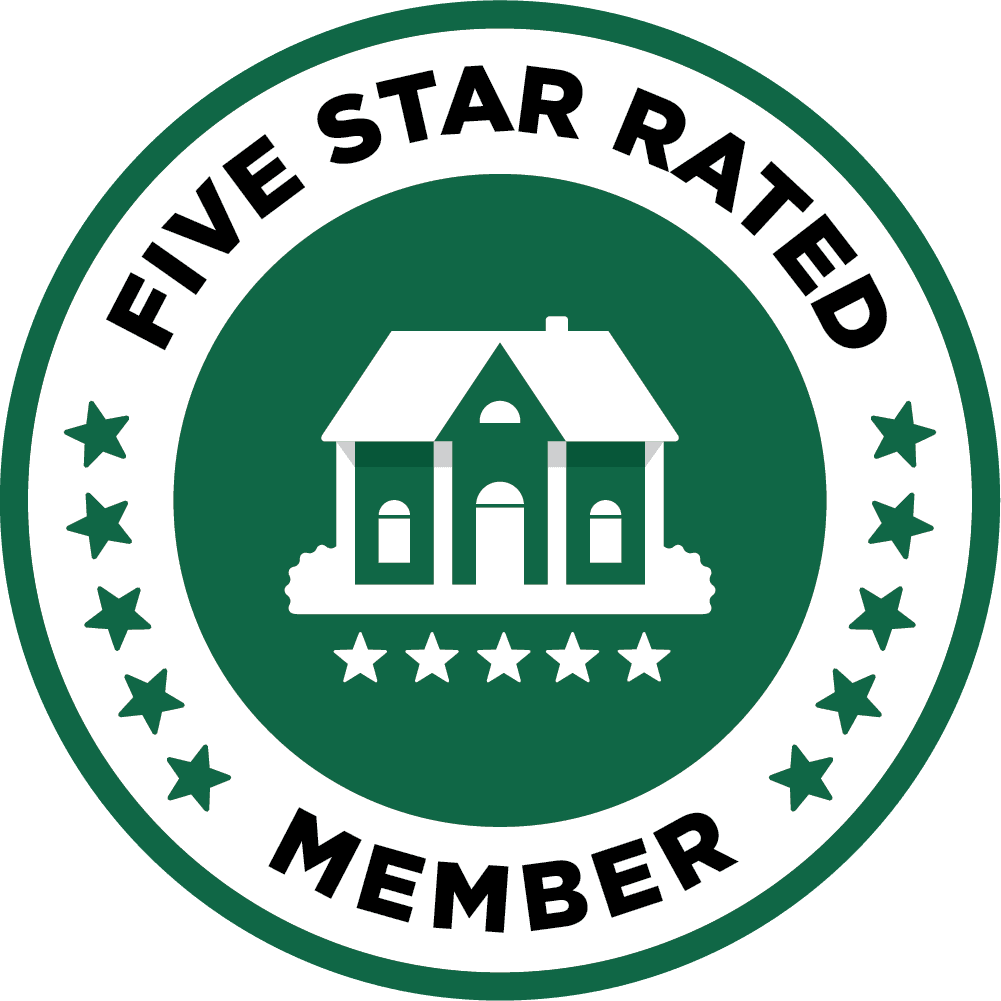

Sorry, the comment form is closed at this time.